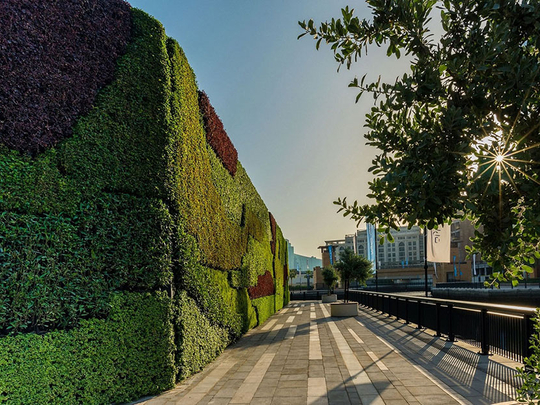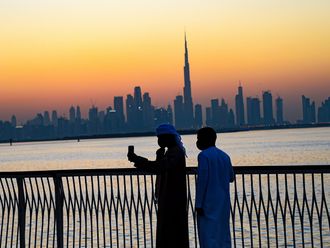
Dubai: In a bid to promote sustainable living, Dubai Properties on Tuesday unveiled a stunning six-metre-high living green wall, the largest in the Middle East, at the Dubai Wharf.
The wall, located in the heart of Culture Village overlooking the historic Dubai Creek, features over 80,000 plants and is capable of offsetting an estimated 4.4 tonnes of carbon dioxide (CO2) annually.
Raed Al Nuaimi, group chief executive officer of Dubai Properties, said, “As one of the top 20 happiest countries in the world and the happiest in the Arab region, according to the World Happiness Report 2018, the UAE is a keen supporter of sustainable living environments that are known to enhance the quality of life and elevate happiness levels.”
Greenery within communities has numerous scientifically proven benefits, such as having a calming effect and encouraging an outdoor lifestyle. The master developer was encouraged to build the wall to enhance the aesthetic appeal of Dubai Wharf and the well-being of its visitors and residents.
The elaborate green wall provides visitors with a perfect backdrop for pictures and invites nature lovers for an idyllic stroll along the Dubai Creek shoreline.
Al Nuaimi added, “The Dubai Wharf Green Wall is a prime example of our holistic approach to well-being in our communities, as it instils a sense of serenity throughout the neighbourhood while supporting the local ecosystem and beautifying the surroundings. In addition, having a new Dubai landmark at their doorstep is a matter of pride for the residents of this community.”
A relatively new concept worldwide, 93 per cent of green walls were installed after 2007. The walls are mostly found in urban environments, like airports and shopping malls, where the plants help reduce the overall temperature of the buildings.
Developed by landscaping experts Gover Horticulture, the Dubai Wharf Green Wall is made using geotextile grow bags filled with peat substrates enriched with nitrogen, phosphorus and potassium (NPK). This allows for better root growth, irrigation and drainage in the UAE climate that can often get quite harsh during the long summers.
Heat build-up in cities is primarily caused by the absorption and subsequent emission of solar heat from asphalt roads and building materials. Plant surfaces can help offset this occurrence by reducing temperatures through a process called evapotranspiration. The effect can be felt more prominently in the immediate vicinity of a surface such as a green wall that can lower surrounding temperatures by up to 5 degree Celsius.
— The writer is an intern at Gulf News












